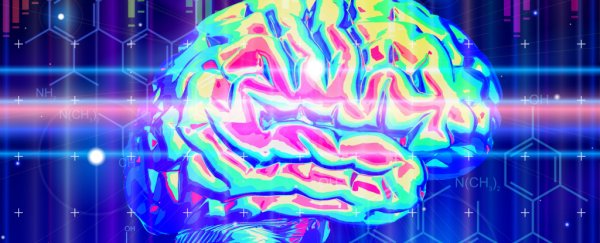Understanding how the brain's complex map of neural connections actually works is one of the greatest challenges faced by scientists today, but new research by the University of New South Wales (UNSW) provides greater insight into how our brainwaves function when resting, and it could have huge implications for our understanding the brain's vast 'connectome'.
"It has been a mystery why these spontaneous patterns of brain activity occur when people are simply lying in a brain scanner not thinking about anything in particular and not doing any explicit task," said one of the researchers, psychologist Joel Pearson.
Pearson and his team created three-dimensional maps of the structures of 10 patients' brains using magnetic resonance imaging ( MRI) and diffusion tensor imaging (DTI) techniques. "The MRI gave us the structure of their cortex - the wrinkly surface of the brain - and the DTI gave us an anatomical map of the underlying connections of the white matter in the brain," he says.
These 3D maps allowed them to see how differences in a person's brain size and structure can create changes in the brainwaves produced while at rest. And it turns out that these resting brain patterns have been identified before in simple, universal rules of nature, known as harmonic waves.
"The patterns we predict with the harmonic waves on the human brain can be compared to the musical notes composing a complex musical piece; the building blocks of more complex patterns of brain activity," said lead author of the study, Selen Atasoy.
"Our results show the shape of the brain matters, in the same way that the… shape of a Stradivarius violin matters if you want to produce an exquisite sound when the strings are vibrated," added Pearson. "Interestingly, the same kinds of harmonic waves are thought to explain other self-organising phenomena in nature, such as the patterns that sand forms when sitting on a vibrating metal plate, or the development of biological patterns such as the stripes on tigers and spots on leopards."
Although scientists have a good understanding of how individual neurons work, the collection of neurons together, and how they form coordinated activity, is still poorly understood. This research could help scientists figure out how small groups of neurons can create significant changes, and in turn control signals travelling around the brain.
"It could lead to a new way to diagnose disorders of consciousness by helping us understand the very complex patterns of brain activity associated with being aware and sentient," said Pearson. "The approach we developed also provides a new technique for analysing the enormous amount of data being generated on brain activity."
This research has been published in Nature Communications.
UNSW Science is a sponsor of ScienceAlert. Find out more about their research.
